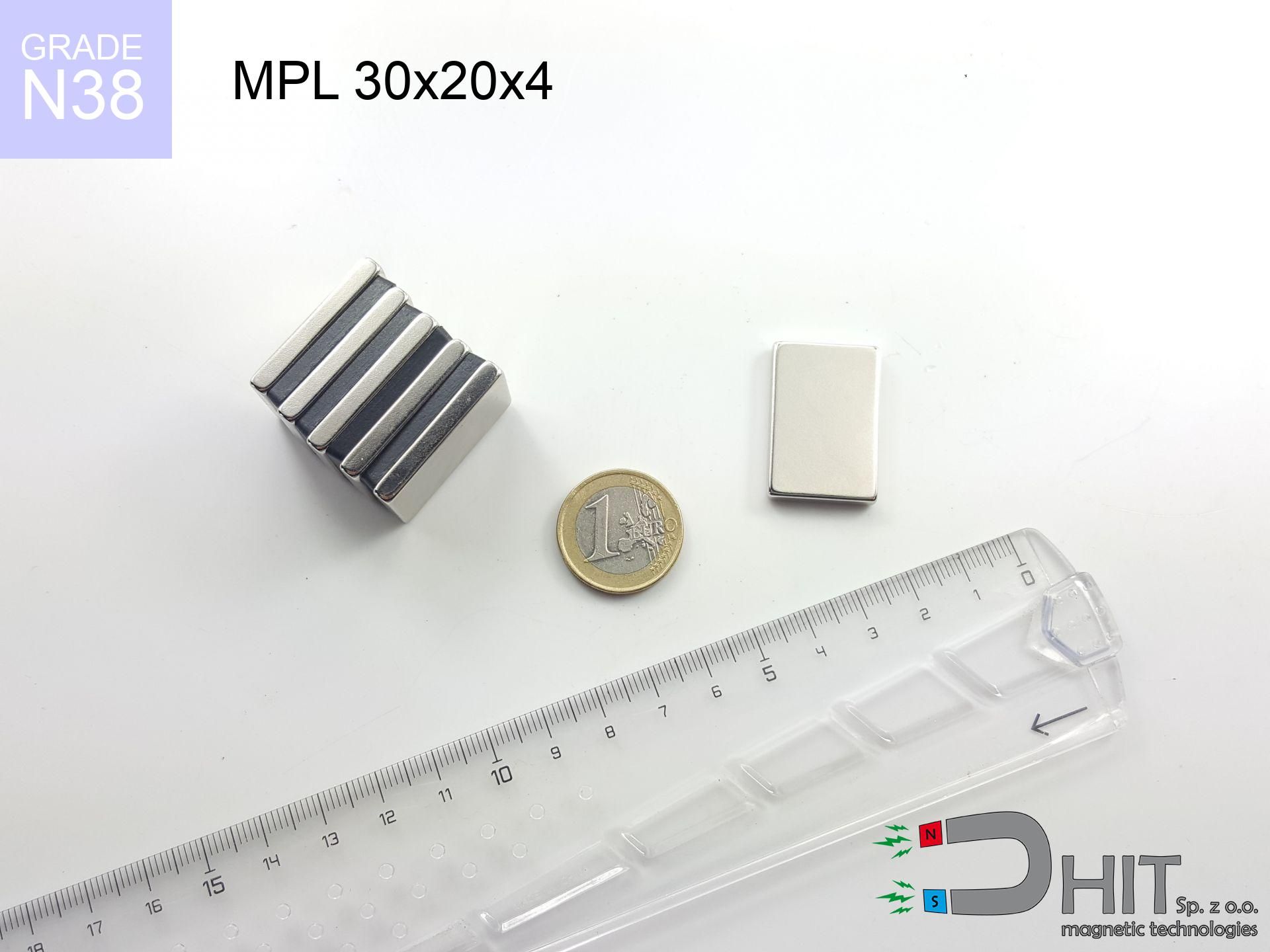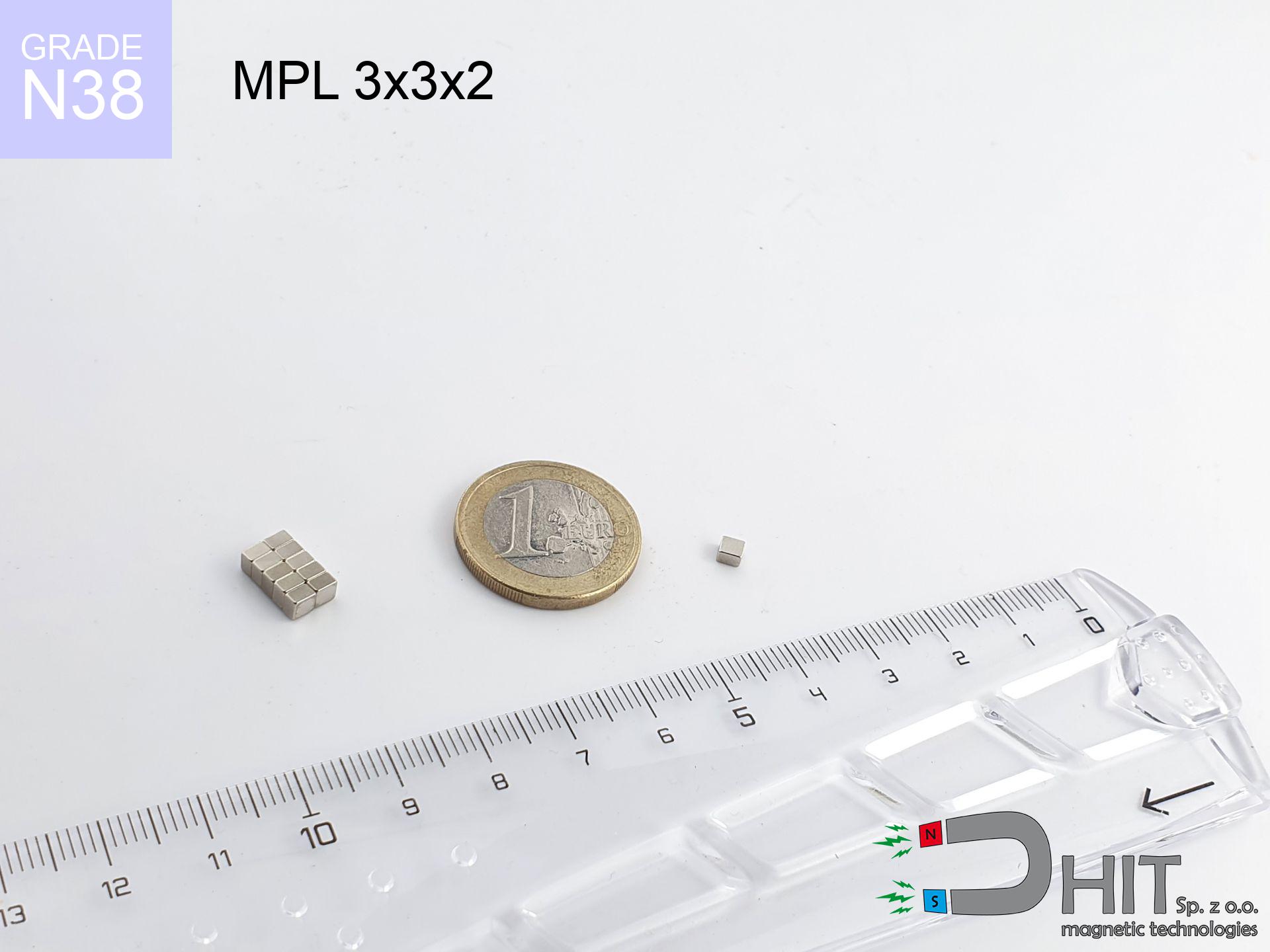UMGB 97x40 [M8+M10] GW F300 +Lina GOBLIN / N38 - goblin magnetic holder
goblin magnetic holder
Catalog no 350439
GTIN/EAN: 5906301814818
Diameter Ø
97 mm [±1 mm]
Height
40 mm [±1 mm]
Weight
2200 g
Magnetization Direction
↑ axial
Load capacity
380.00 kg / 3726.53 N
Coating
[NiCuNi] Nickel
485.00 ZŁ with VAT / pcs + price for transport
394.31 ZŁ net + 23% VAT / pcs
bulk discounts:
Need more?
Pick up the phone and ask
+48 22 499 98 98
if you prefer contact us through
inquiry form
through our site.
Strength along with form of magnetic components can be reviewed with our
power calculator.
Order by 14:00 and we’ll ship today!
Technical - UMGB 97x40 [M8+M10] GW F300 +Lina GOBLIN / N38 - goblin magnetic holder
Specification / characteristics - UMGB 97x40 [M8+M10] GW F300 +Lina GOBLIN / N38 - goblin magnetic holder
| properties | values |
|---|---|
| Cat. no. | 350439 |
| GTIN/EAN | 5906301814818 |
| Production/Distribution | Dhit sp. z o.o. |
| Country of origin | Poland / China / Germany |
| Customs code | 85059029 |
| Diameter Ø | 97 mm [±1 mm] |
| Height | 40 mm [±1 mm] |
| Weight | 2200 g |
| Magnetization Direction | ↑ axial |
| Load capacity ~ ? | 380.00 kg / 3726.53 N |
| Coating | [NiCuNi] Nickel |
| Manufacturing Tolerance | ±1 mm |
Magnetic properties of material N38
| properties | values | units |
|---|---|---|
| remenance Br [min. - max.] ? | 12.2-12.6 | kGs |
| remenance Br [min. - max.] ? | 1220-1260 | mT |
| coercivity bHc ? | 10.8-11.5 | kOe |
| coercivity bHc ? | 860-915 | kA/m |
| actual internal force iHc | ≥ 12 | kOe |
| actual internal force iHc | ≥ 955 | kA/m |
| energy density [min. - max.] ? | 36-38 | BH max MGOe |
| energy density [min. - max.] ? | 287-303 | BH max KJ/m |
| max. temperature ? | ≤ 80 | °C |
Physical properties of sintered neodymium magnets Nd2Fe14B at 20°C
| properties | values | units |
|---|---|---|
| Vickers hardness | ≥550 | Hv |
| Density | ≥7.4 | g/cm3 |
| Curie Temperature TC | 312 - 380 | °C |
| Curie Temperature TF | 593 - 716 | °F |
| Specific resistance | 150 | μΩ⋅cm |
| Bending strength | 250 | MPa |
| Compressive strength | 1000~1100 | MPa |
| Thermal expansion parallel (∥) to orientation (M) | (3-4) x 10-6 | °C-1 |
| Thermal expansion perpendicular (⊥) to orientation (M) | -(1-3) x 10-6 | °C-1 |
| Young's modulus | 1.7 x 104 | kg/mm² |
Chemical composition
| iron (Fe) | 64% – 68% |
| neodymium (Nd) | 29% – 32% |
| boron (B) | 1.1% – 1.2% |
| dysprosium (Dy) | 0.5% – 2.0% |
| coating (Ni-Cu-Ni) | < 0.05% |
Ecology and recycling (GPSR)
| recyclability (EoL) | 100% |
| recycled raw materials | ~10% (pre-cons) |
| carbon footprint | low / zredukowany |
| waste code (EWC) | 16 02 16 |
Other offers
Pros and cons of neodymium magnets.
Benefits
- They do not lose magnetism, even after around 10 years – the reduction in power is only ~1% (according to tests),
- Magnets effectively defend themselves against loss of magnetization caused by ambient magnetic noise,
- A magnet with a shiny gold surface looks better,
- Magnets possess huge magnetic induction on the surface,
- Thanks to resistance to high temperature, they can operate (depending on the shape) even at temperatures up to 230°C and higher...
- Thanks to modularity in shaping and the ability to customize to specific needs,
- Key role in high-tech industry – they serve a role in hard drives, drive modules, medical equipment, and other advanced devices.
- Compactness – despite small sizes they generate large force, making them ideal for precision applications
Weaknesses
- To avoid cracks upon strong impacts, we suggest using special steel holders. Such a solution secures the magnet and simultaneously increases its durability.
- Neodymium magnets lose force when exposed to high temperatures. After reaching 80°C, many of them experience permanent drop of power (a factor is the shape as well as dimensions of the magnet). We offer magnets specially adapted to work at temperatures up to 230°C marked [AH], which are extremely resistant to heat
- Magnets exposed to a humid environment can corrode. Therefore during using outdoors, we suggest using waterproof magnets made of rubber, plastic or other material resistant to moisture
- We recommend a housing - magnetic mount, due to difficulties in creating nuts inside the magnet and complex shapes.
- Potential hazard related to microscopic parts of magnets pose a threat, when accidentally swallowed, which gains importance in the context of child health protection. Furthermore, tiny parts of these devices are able to complicate diagnosis medical after entering the body.
- Due to complex production process, their price is higher than average,
Holding force characteristics
Best holding force of the magnet in ideal parameters – what affects it?
- on a plate made of mild steel, optimally conducting the magnetic field
- whose thickness equals approx. 10 mm
- with a surface perfectly flat
- with zero gap (without coatings)
- under axial force vector (90-degree angle)
- at temperature room level
Lifting capacity in real conditions – factors
- Gap (betwixt the magnet and the metal), because even a very small clearance (e.g. 0.5 mm) results in a reduction in force by up to 50% (this also applies to paint, corrosion or dirt).
- Loading method – catalog parameter refers to pulling vertically. When slipping, the magnet holds much less (typically approx. 20-30% of nominal force).
- Plate thickness – insufficiently thick plate does not close the flux, causing part of the flux to be wasted into the air.
- Metal type – different alloys attracts identically. High carbon content worsen the attraction effect.
- Plate texture – ground elements ensure maximum contact, which improves force. Rough surfaces weaken the grip.
- Thermal factor – hot environment reduces pulling force. Too high temperature can permanently damage the magnet.
Lifting capacity was determined with the use of a steel plate with a smooth surface of optimal thickness (min. 20 mm), under perpendicular detachment force, however under shearing force the load capacity is reduced by as much as 75%. Additionally, even a slight gap between the magnet’s surface and the plate lowers the holding force.
Precautions when working with NdFeB magnets
Nickel coating and allergies
Studies show that the nickel plating (the usual finish) is a common allergen. If your skin reacts to metals, avoid direct skin contact and opt for coated magnets.
Bone fractures
Danger of trauma: The attraction force is so immense that it can result in hematomas, pinching, and even bone fractures. Use thick gloves.
Machining danger
Dust produced during machining of magnets is combustible. Do not drill into magnets unless you are an expert.
Cards and drives
Equipment safety: Strong magnets can ruin data carriers and delicate electronics (pacemakers, medical aids, mechanical watches).
Beware of splinters
Despite the nickel coating, neodymium is delicate and not impact-resistant. Do not hit, as the magnet may shatter into sharp, dangerous pieces.
Pacemakers
For implant holders: Powerful magnets disrupt electronics. Maintain minimum 30 cm distance or ask another person to handle the magnets.
Operating temperature
Watch the temperature. Exposing the magnet above 80 degrees Celsius will permanently weaken its properties and pulling force.
Compass and GPS
Navigation devices and smartphones are extremely sensitive to magnetism. Direct contact with a strong magnet can permanently damage the sensors in your phone.
Do not give to children
Only for adults. Small elements pose a choking risk, causing severe trauma. Store out of reach of children and animals.
Handling guide
Use magnets consciously. Their immense force can surprise even experienced users. Plan your moves and respect their power.

![Goblin holder UMGB 97x40 [M8+M10] GW F300 +Lina GOBLIN / N38 Goblin holder UMGB 97x40 [M8+M10] GW F300 +Lina GOBLIN / N38](https://cdn3.dhit.pl/graphics/banners/magnet.webp)
![UMGB 97x40 [M8+M10] GW F300 +Lina GOBLIN / N38 - goblin magnetic holder](https://cdn3.dhit.pl/graphics/products/umgb-97x40-m8+m10-gw-f300-+lina-goblin-hib.jpg)





